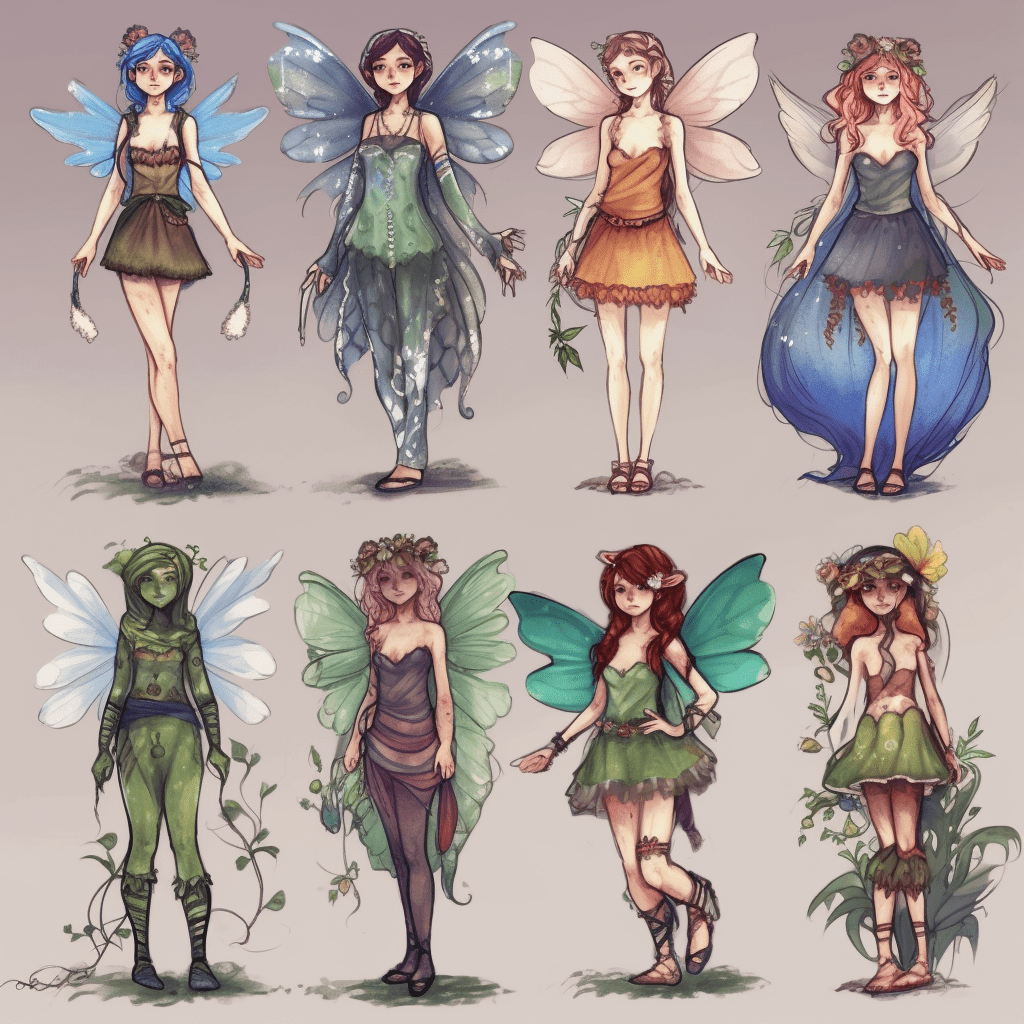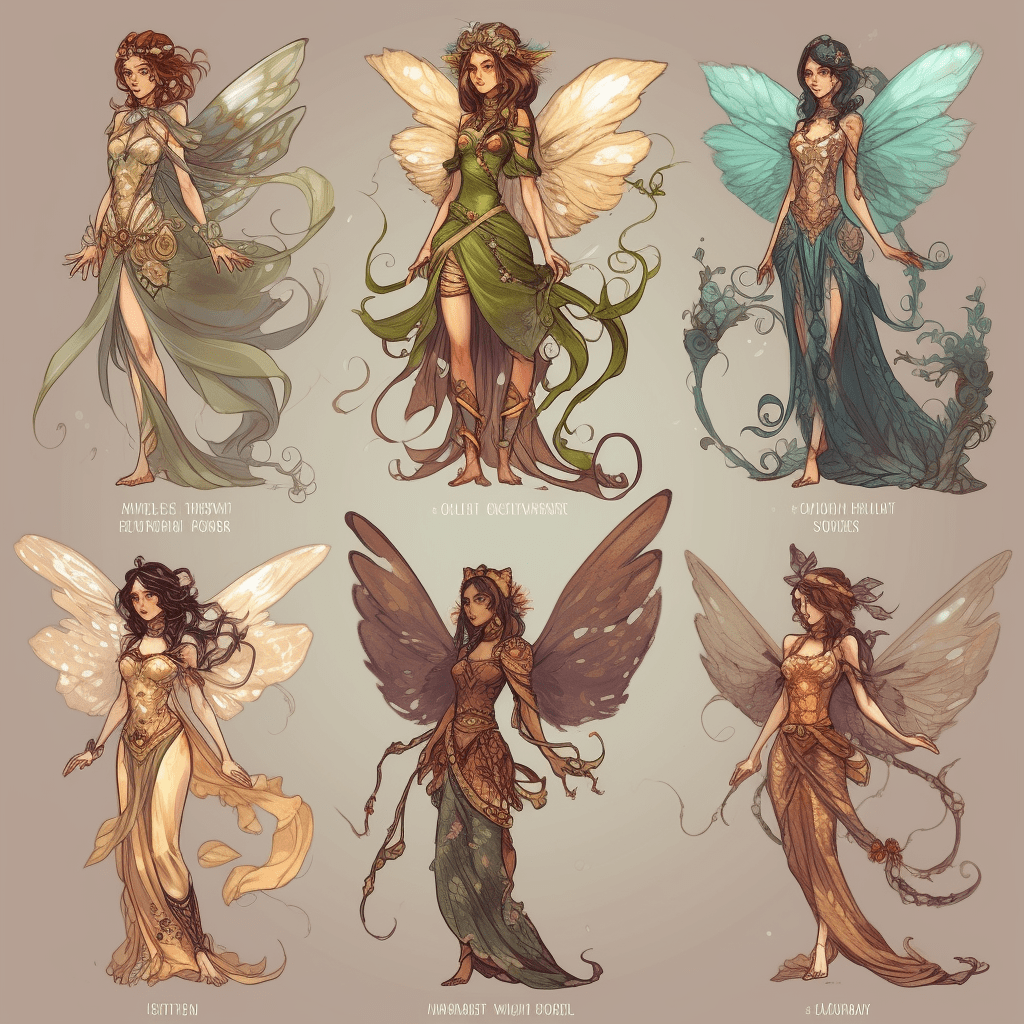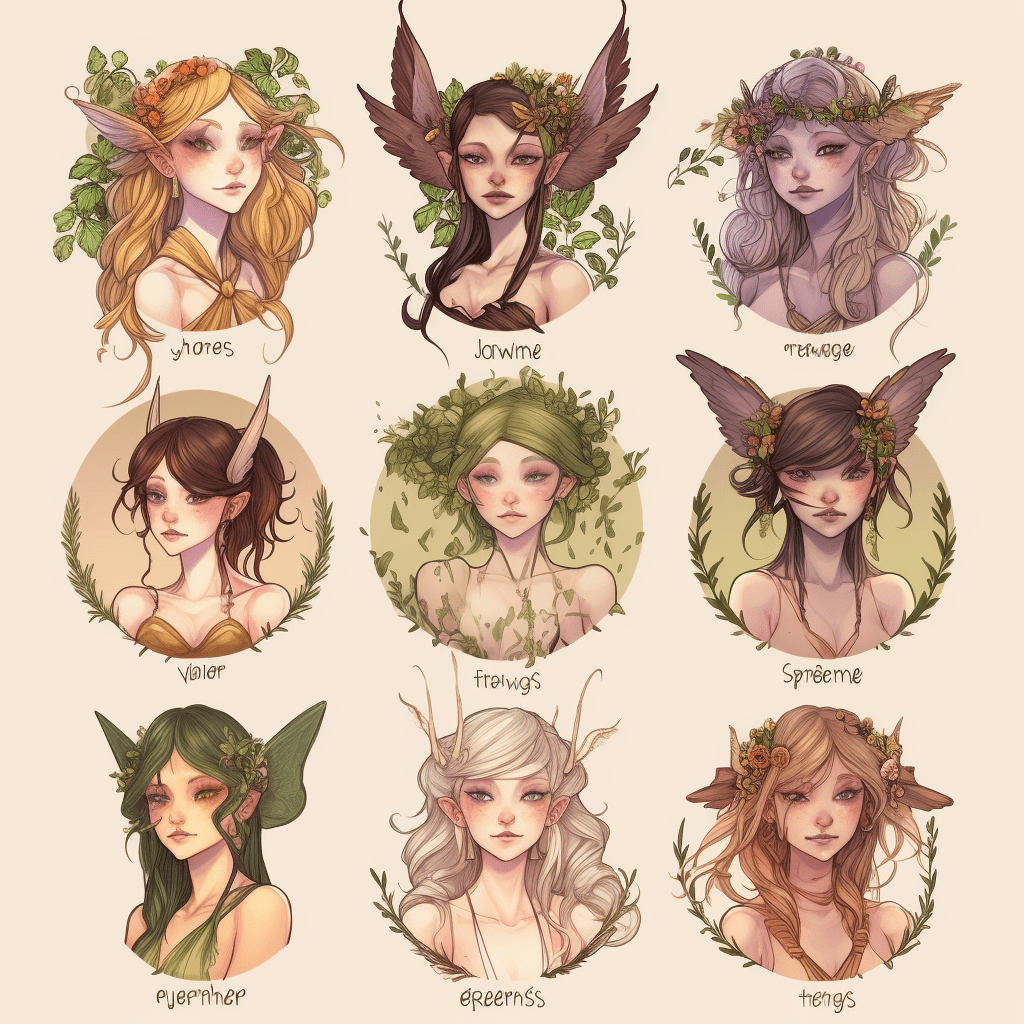Types of Faeries
The realm of Faeries is a mysterious one, filled with creatures of myth and legend. In folklore, they come in many forms, from helpful Brownies to mischievous Pixies, and wise Elves. Each of these faerie species has its own unique characteristics, and has been featured in stories and songs throughout history. Brownies, for example, are small faeries found in English and Scottish folklore. They are often helpful creatures, often assisting with chores or performing acts of kindness. Pixies, on the other hand, are mischievous and playful faeries found in Cornish folklore. They are known for their pranks and mischief-making, though they aren’t malicious. Elves, meanwhile, are tall, wise faeries found in Germanic and Scandinavian folklore. They are often portrayed as wise and powerful, with magical abilities. No matter the type, faeries have long been a source of fascination and mystery. In fact, many people still believe in the existence of faeries, and believe that they can be found in the natural world. Whether they are real or not, these mythical creatures will continue to fascinate and inspire us for years to come.Different Types of Faeries
Why is the realm of Faeries so captivating? From helpful Brownies to mischievous Pixies, and wise Elves, there is something special about each type of Faerie. These mythical creatures have captured the imaginations of people for centuries, inspiring stories and songs that still resonate today. But what makes these magical creatures so alluring?
The different types of Faeries, from Fey Races like Elves, Pixies, and Brownies, to Nature Spirits like Nymphs, Dryads, and Satyrs, to Elementals associated with the elements of Fire, Air, Water, and Earth, all have unique characteristics that contribute to their mystique. Elves, for example, are often seen as wise and powerful. Pixies are known for their pranks and mischief-making. Brownies, meanwhile, often perform acts of kindness.
Nature Spirits have close ties to the natural world, while Elementals are connected to the elements themselves. Faeries have captivated and inspired for centuries, and many still believe in the existence of these mythical creatures in the natural world. Whether real or not, the realm of Faeries continues to fascinate and intrigue us.

Reality of Faeries
How can we make sense of the mysterious realm of Faeries? From helpful Brownies to mischievous Pixies, and wise Elves, the different types of Faeries have captured the imaginations of people for centuries. But what is the reality of these mythical creatures? Beliefs and myths surrounding Faeries are abundant, from stories of magical powers to tales of mischievous pranks. But is there any evidence to support their existence?
There have been reports of Faerie sightings throughout history, as well as a multitude of stories and accounts of interactions with these mythical creatures. However, without concrete proof, the question of whether Faeries truly exist remains a mystery.
In order to gain a better understanding of the reality of Faeries, it is important to understand their unique characteristics. Each type of Faerie, from Fey Races like Elves, Pixies, and Brownies, to Nature Spirits like Nymphs, Dryads, and Satyrs, to Elementals associated with the elements of Fire, Air, Water, and Earth, all have distinct features and characteristics. Elves, for example, are often seen as wise and powerful, while Pixies are known for their pranks and mischief-making. Brownies, meanwhile, often perform acts of kindness. Nature Spirits have close ties to the natural world, while Elementals are connected to the elements themselves.
Characteristics of Each Type
The realm of Faeries is a mysterious one that has captured the imaginations of people for centuries. From helpful Brownies to mischievous Pixies, and wise Elves, each type of Faerie has unique characteristics that set it apart from the others. Common traits are also found among the different types of Fae. For instance, many Fae are associated with a mischievous nature and magical powers, while others are seen as helpful and kind.
Elves, for example, are often seen as wise and powerful, while Pixies are known for their pranks and mischief-making. Brownies, meanwhile, often perform acts of kindness. Additionally, each type of Fae has its own special powers or abilities. Elves, for example, possess great wisdom and the ability to create magical items, while Pixies are capable of shape-shifting and invisibility. Nature Spirits, such as Nymphs, Dryads, and Satyrs, have close ties to the natural world and the ability to influence weather patterns, while Elementals possess powerful elemental-based abilities.

Interaction with Humans
Fae are said to have the ability to interact with humans in numerous ways, from influencing dreams and emotional states to offering advice and guidance. Additionally, Fae possess magical powers that allow them to shape-shift and manipulate their environment. As such, humans may perceive Fae in different ways, some as benevolent and others as mischievous or even dangerous.
Fae are also often associated with nature and can appear in forms such as animals, trees, and plants. Fae have unique characteristics that set them apart from one another, with Elves being wise and powerful, Pixies being mischievous pranksters, and Brownies often performing acts of kindness.
Nature Spirits, such as Nymphs, Dryads, and Satyrs, have close ties to the natural world, while Elementals are connected to the elements of Fire, Air, Water, and Earth. Each type of Fae also possesses its own special powers or abilities, making them a truly captivating part of the Faerie realm.
Legends Associated with Faeries
When it comes to fantastical creatures, few are as captivating as faeries. Legends about these magical beings have been passed down through the generations, in cultures ranging from Irish to Native American.
There are numerous representations of faeries, from pixies and sprites to mischievous goblins and wood-dwelling nymphs. Faeries are often believed to possess supernatural powers, such as the ability to bring good or bad luck, grant wishes, and even influence the weather.
They are also seen as protectors and guardians of nature, playing an important role in many mythologies and folklore.

Purpose of Faeries in Mythology
For many cultures, these mythical beings have served as a way to explain the unexplainable and to provide an entertaining source of inspiration. From pixies and sprites to goblins and wood-dwelling nymphs, faeries have been represented in many different ways throughout history.
Furthermore, they have also been associated with natural phenomena such as weather and disease. Through their various representations, faeries have become a part of our cultural heritage, providing us with a source of comfort and solace in times of need.
When it comes to understanding the purpose of faeries in mythology, it is clear that these mythical creatures offer much more than just entertainment.
Representation of Faeries in Popular Culture
It is clear that faeries have been a part of popular culture for centuries, from traditional folk tales to more modern interpretations. The mythological origins of faeries can be traced back to both Greek and Roman literature, with references to these mythical creatures appearing in ancient texts.
In modern literature, art, and film, faeries are often represented as mischievous and magical creatures. In addition to this, they have had a significant influence on popular culture, inspiring fashion, music, and even entire genres of fiction.
From pixies and sprites to goblins and wood-dwelling nymphs, faeries have been depicted in many different ways throughout history.
